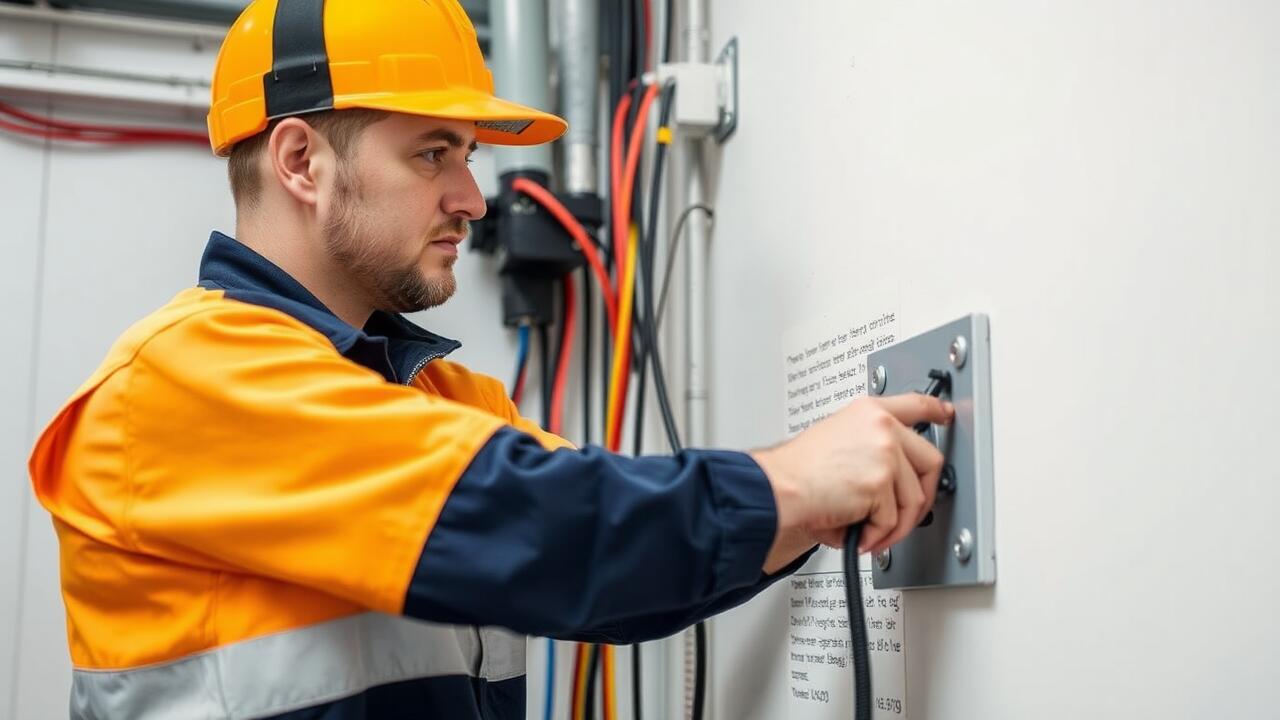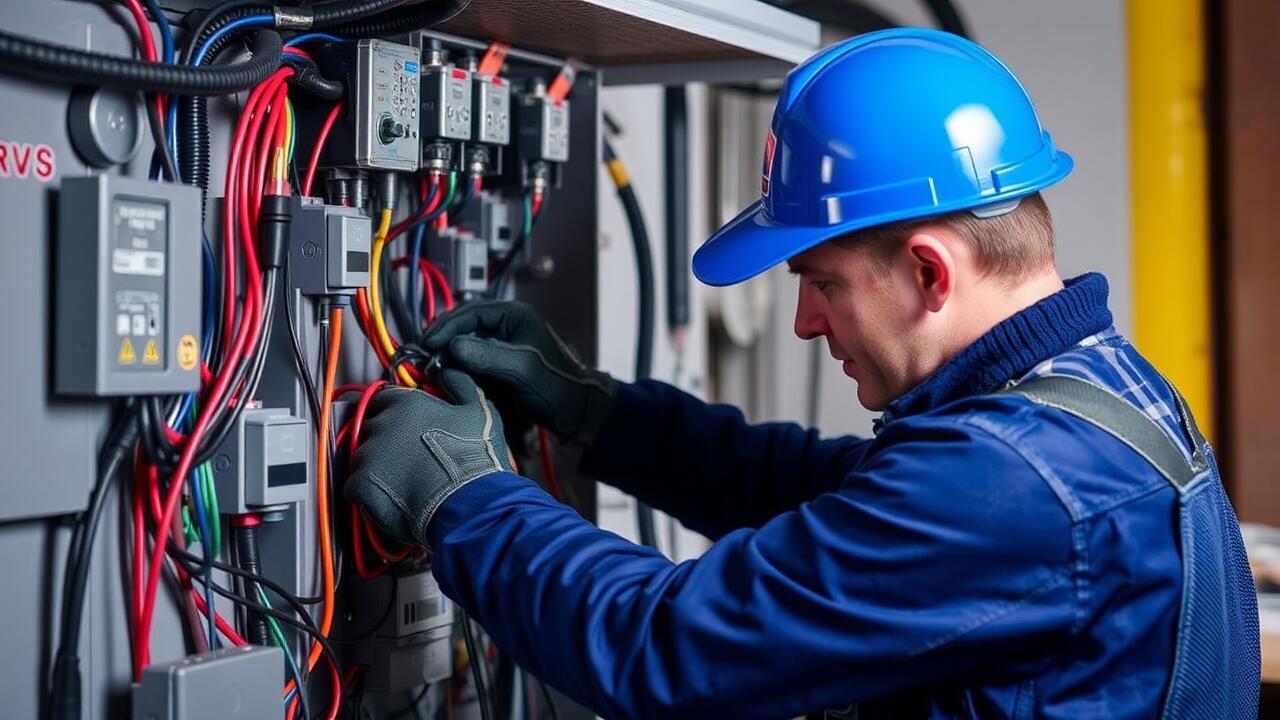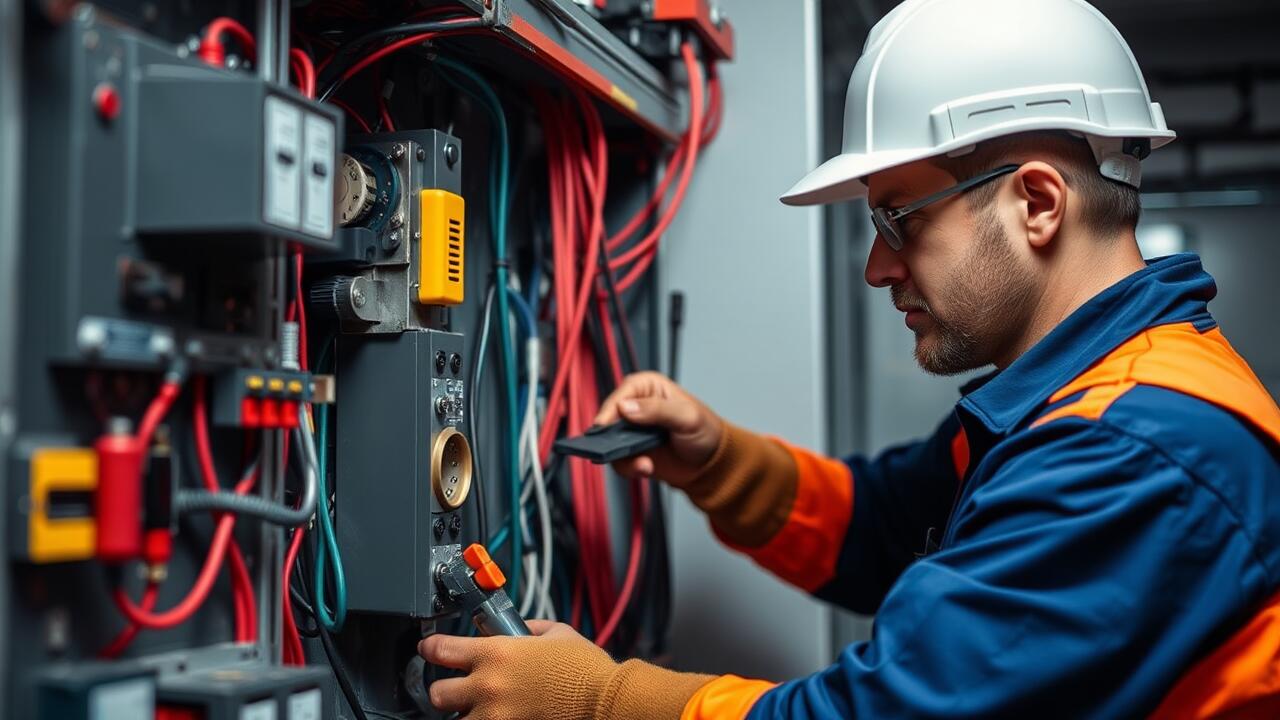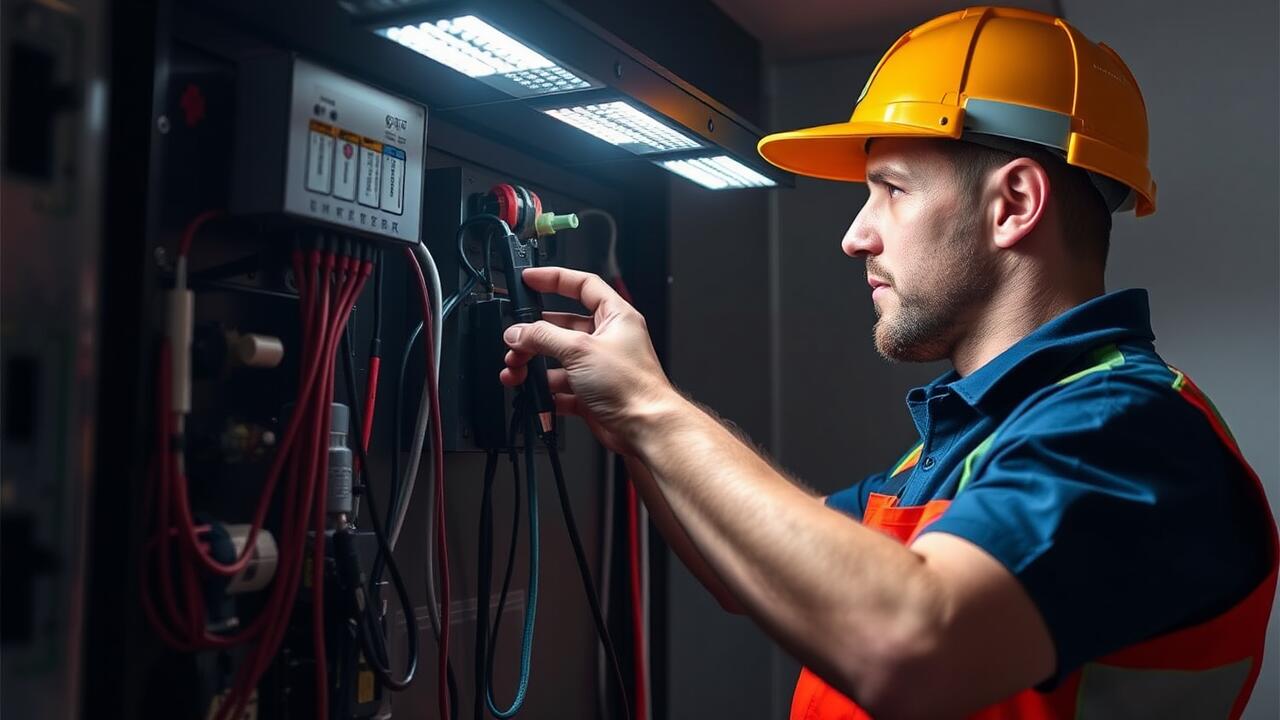
Testing Circuit Breakers for Functionality
Inspecting the functionality of circuit breakers is a crucial first step when diagnosing dead circuits. Begin by visually examining the breaker panel for any tripped breakers. A tripped breaker will often appear in the middle position, indicating that it needs to be reset. Gently push the breaker switch to the "off" position before firmly flipping it back to the "on" position. This simple action can often resolve issues with power loss and restore functionality to the affected circuit.
If the breaker repeatedly trips, further investigation is necessary. You may need to assess the overall load on the circuit to determine if it is overloaded. Additionally, it's important to check for signs of wear and damage within the panel itself. Should you encounter persistent issues, consulting a professional for River Oaks, Houston Electrical Repairs can offer valuable insight and potential solutions to ensure the safety and efficiency of your home's electrical system.
How to Reset and Inspect Breakers
Resetting a circuit breaker is a straightforward process that can often restore power to areas of your home that have gone dark. Begin by locating your main electrical panel, which is typically found in utility areas or basements. Check the breakers; a tripped breaker will be in the off position or slightly out of alignment compared to the others. Gently push the switch fully to the off position before flipping it back on, which should ideally restore functionality to the circuit.
Inspecting breakers for signs of wear or damage is equally important in maintaining safe electrical systems. Look for any discoloration around the switches, unusual noises, or a burning smell, which may indicate malfunction. If any of these issues arise, consult professionals like those offering River Oaks, Houston Electrical Repairs to ensure your system is safe and fully operational. Regular inspections can prevent future problems and ensure a reliable power supply throughout your home.
Using a Multimeter to Diagnose Circuits
A multimeter is an essential tool for diagnosing circuits in your Montrose home. When using a multimeter, start by setting the device to the appropriate measurement mode, typically voltage for live circuits or resistance for checking components. Touch the probes to the corresponding terminals and read the display to evaluate the electrical values. This process can help identify whether the circuit is receiving power or if there are issues such as shorts or open connections.
In occasional cases, you may encounter more severe issues that require professional intervention. If your readings are consistently outside normal ranges, it might indicate faulty wiring or damaged components. At that point, seeking expert services, like Greenspoint, Houston Electrical Repairs, can ensure that any underlying problems are diagnosed and resolved effectively. Proper handling and understanding of the multimeter can prevent misinterpretation of results and lead to a better approach in fixing electrical issues.
Proper Techniques for Accurate Measurements
When using a multimeter to diagnose circuits, ensuring accurate measurements is essential. Begin by selecting the appropriate setting on your multimeter, such as AC or DC voltage, depending on the circuit type. Make sure to connect the probes securely to the corresponding terminals to avoid inaccuracies. It's wise to check the multimeter's calibration with a known voltage source prior to testing any circuits. This step assures that your readings are reliable and precise.
While taking measurements, remain focused on proper safety protocols. Avoid touching any exposed wires or terminals, as this can lead to electric shock. For residential diagnostics, areas such as West University Place often provide ample resources for skilled technicians specializing in Houston electrical repairs. Professional assistance can further enhance the reliability of your electrical assessments, ensuring any hidden issues are identified and addressed effectively.
Checking for Faulty Wiring
Faulty wiring can be a hidden issue within your home’s electrical system. Look for signs such as flickering lights, unusual buzzing sounds, or excessive heat near outlets. These indicators can suggest that the wiring is deteriorating or improperly installed. It's crucial to examine not just visible wires but also those hidden behind walls or ceilings, as damage can occur due to age, pests, or previous renovations.
If you suspect faulty wiring, it may be wise to consult professionals experienced in handling such issues. Specialists in River Oaks, Houston Electrical Repairs can provide thorough inspections and safe solutions. They possess the tools and expertise to identify problems that may not be obvious to the untrained eye. Ensuring your wiring is safe and functional is essential for the overall reliability of your home’s electrical system.
Identifying Damage or Wear in Electrical Lines
Inspecting electrical lines for damage or wear is essential for maintaining the safety and functionality of your home’s electrical system. Look for any signs of fraying, exposed wires, or discoloration, which may indicate overheating or corrosion. Pay close attention to connections where the wires meet outlets, switches, and circuit breakers. These areas are potential hotspots for wear and may require immediate attention to prevent further issues.
In Spring Branch West, Houston electrical repairs often involve identifying worn or damaged wiring. Use a flashlight to examine areas where wiring is exposed, such as basements or attics. Check for signs of rodent activity, which can compromise the integrity of electrical lines. If you notice any abnormalities, it may be prudent to consult a professional to evaluate and address the situation. Proper maintenance and timely repairs can help ensure your electrical system operates safely and efficiently.
FAQS
What are the signs of a dead circuit in my home?
Common signs of a dead circuit include lights not turning on, appliances not receiving power, and circuit breakers frequently tripping.
How can I safely reset a tripped circuit breaker?
To safely reset a tripped circuit breaker, first turn off all appliances connected to the affected circuit. Then, locate your breaker panel, switch the tripped breaker to the "off" position, and finally flip it back to "on."
What is a multimeter and how do I use it to diagnose electrical issues?
A multimeter is a device used to measure voltage, current, and resistance in electrical circuits. To use it, set the multimeter to the appropriate measurement type, connect the probes to the circuit, and read the values displayed on the screen.
How can I check for faulty wiring in my home?
To check for faulty wiring, visually inspect the wiring for signs of damage, such as fraying or discoloration. You can also use a multimeter to test for continuity and voltage levels in the wires.
When should I call a professional electrician for circuit diagnosis?
You should call a professional electrician if you are unsure about diagnosing the issue, if you encounter complex wiring problems, or if the circuit issues persist after you have performed basic troubleshooting.




